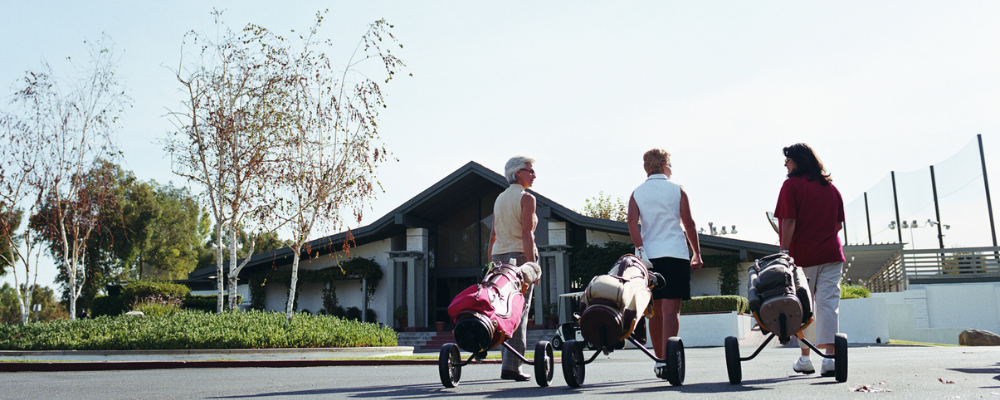By Edward Yoder, CPA, MSA
IN THIS ARTICLE:
Selling food and beverages to non-members. Green fees. Advertising in newsletters. Pro shop sales.
These are common activities that generate unrelated business income for tax-exempt social clubs.
Final regulations for calculating unrelated business taxable income mostly kept in line with earlier proposed regulations. The final regulations change the way that exempt organizations must calculate unrelated business taxable income (UBTI) when there are multiple unrelated business activities.
Background
On December 22, 2017, Congress passed the 2017 Tax Cut and Jobs Act (TCJA), which included a new code section 512(a)(6) requiring that exempt organizations silo net operating losses NOLs by separate unrelated business activity. Section 512(a)(6) requires an organization with more than one unrelated trade or business to calculate UBTI separately with respect to each trade or business. Congress intended that a deduction from one trade or business may not be used to offset income from a different unrelated trade or business for the same taxable year.
Proposed Regulations: UBTI for Tax-Exempt Organizations
In April 2020, the IRS issued proposed regulations on how exempt organizations were to calculate UBTI and allocate expenses. The proposed regulations noted that exempt organizations should use the first two digits of the NAICS code for classifying unrelated trades or businesses.
Examples of classifying separate UBTI activities include:
- Food & Beverage activities (722511)
- Room and Lodging activities (72110)
- Golf (713910)
- Tennis (713940)
- Swimming (713940)
- Golf Pro Shop retail sales – Sporting Goods Retailers (459110)
The proposed regulations also note that the unadjusted gross-to-gross allocation method is not a reasonable method for allocating all expenses. It has been common practice for Social Clubs to use the gross-to-gross method for allocating expenses to nonmember activities. If the Club has $1,000,000 in total receipts and $100,000 came from nonmembers, the Club would allocate 10% ($100,000 / $1,000,000) of all expenses that related to the activities (food & beverage and golf, tennis, swimming activities) that generated nonmember revenues as a deduction in arriving at unrelated business taxable income. The IRS regulations no longer allow the gross-to-gross method for allocating all expenses.
Allocating Expenses for Social Clubs
IRS Regulation 1.512(a)-1(c) promulgates where facilities are used both to carry on exempt activities and to conduct unrelated trade or business activities, expenses, depreciation and similar items attributed to such facilities shall be allocated between the two uses on a reasonable basis.
Similarly, where personnel are used both to carry on exempt activities and to conduct unrelated trade or business activities, expenses and similar items attributable to such personnel shall be allocated between the two uses on a reasonable basis.
The IRS has generally classified expenses in three categories as follows:
| Direct | Expenses that increase in direct proportion to the volume of the activity and not incurred otherwise, such as cost of goods sold or expenses incurred for specific events. For example: extra labor, perishable decorations, and entertainment for a specific event. Direct expenses incurred for specific events are deductible in full from the event receipts and therefore need no allocation. |
|---|---|
| Variable | Expenses that vary in proportion to the actual use of the facility but can’t be identified with a particular activity, such as salaries, utilities, maintenance, cleaning, uniforms, laundry, telephone, postage, printing, and professional fees. |
| Fixed | Expenses that don’t vary in proportion to the actual use of the facility, such as depreciation, interest, real estate taxes, property insurance, and permits. |
One method of allocation frequently used is allocating all three expense categories based on gross receipts, commonly referred to as the Gross Receipts Allocation Method. This method is generally not considered reasonable to allocate variable or fixed expenses when members and nonmembers pay different amounts.
The Gross Receipts Allocation Method is not reasonable for allocating expenses if the fees for using the facility are included in the members’ dues.
Example 1: Only nonmembers or guests typically pay green fees.
An allocation of expenses based on the ratio that nonmember green fees bear to total green fees wouldn’t yield a reasonable approximation of nonmember expenses, since the calculation does not include members’ dues.
A more appropriate allocation method may be to allocate the expenses based on the ratio of the number of nonmember rounds of golf played to the total number of rounds of golf played.
Example 2: Nonmembers are charged more than members.
An equal number of members and nonmembers are served the same meal in a club’s dining room. Members pay $25 and nonmembers pay $30.
Example 3: Nonmembers are charged additional fees not charged to members.
In focus: The IRS first published their example of a reasonable method of allocation of nonmember expenses in 1975 with the 990 supplemental instructions. The hypothetical organization had the title Big Divot Country Club. The IRS used the Big Divot Allocation Method to allocate expenses as follows:
- Direct: Allocate cost of goods sold based on the ratio of nonmember sales to total sales.
- Variable: Allocate variable expenses based on the ratio of estimated hours of nonmember use during the year to total facility use hours for the year.
- Fixed: Allocate fixed expenses based on the ratio of the estimated hours of nonmember use during the year to total hours in the year.
The use of the Big Divot Allocation Method for fixed expenses was litigated in Rensselaer Polytechnic Institute v. Commissioner, (732 F.2d 1058 2nd Cir., 1984). In Rensselaer the taxpayer argued that fixed expenses should be allocated on the same basis as variable expenses. The ratio of the estimated hours of nonmember use to the total hours the facility was used during the year instead of the ratio of the estimated hours of nonmember use to the total hours in the year as proposed by the IRS.
The Court held for the taxpayer stating an allocation based on the time of actual use is reasonable within the meaning of Treas. Reg. 1.512(a)-1(c).
The IRS issued the Action on Decision on Rensselaer, A.O.D. 1438 in June 1987, where it continues to take the position today that under the circumstances described in Rensselaer where the dual use of the facility was near maximum use, fixed expenses should not be allocated based on actual usage. The IRS contends an allocation based on the total available time is the method of allocating fixed expenses that meets the reasonableness standard of Treas. Reg. 1.512(a)-1(c). Specific issues should not be litigated until the “reasonableness” test of Treas. Reg. 1.512(a)-1(c) is amended.
Final Regulations: Allocating Expenses and the Reasonableness Test
By issuing new UBTI regulations, the IRS is amending the reasonableness test of Treas. Reg. 1.512(a)-1(c). The proposed regulations note that the IRS had previously indicated that it will not litigate the reasonableness of the allocation method in Rensselaer pending revision of the Treasury regulations.
However, regarding facilities or personnel that are used both to carry on exempt activities and to conduct unrelated trade or business activities or more than one separate unrelated trade or business, the Treasury Department and the IRS have concluded that allocating expenses, depreciation, and similar items using an unadjusted gross-to-gross method of allocation uses a ratio of gross income from an unrelated trade or business activity over the total gross income from both unrelated and related activities generating the same indirect expenditures.
The percentage resulting from this ratio is used to determine the percentage of the shared costs attributable to the unrelated trade or business activity, or activities.
In some circumstances, the provision of a good or service can be both related and unrelated depending on to whom the good or service is offered.
For example, with respect to social clubs, the provision of goods and services to members is an exempt function whereas the provision of the same goods and services to nonmembers is a nonexempt function. If the social club charges nonmembers a higher price than it charges members for the same good or service the gross-to-gross ratio will increase, resulting in more indirect expenses being allocated to the unrelated activity.
Accordingly, failing to adjust the price of the good or service offered to nonmembers or the general public for purposes of determining the allocation of indirect expenses overstates the percentage of the indirect expenses that should be allocated to the unrelated activities.
The new proposed regulations from the IRS provide that the unadjusted gross-to-gross method is not reasonable, whether under the general allocation rule or as incorporated for section 512(a)(6) purposes.
Action Needed: Revise UBTI Calculation Worksheets
Action is needed now to re-engineer most clubs’ unrelated business income calculation worksheets.
PBMares works with clubs to:
- Separate trial balance accounts into Direct, Variable, and Fixed expense categories, then
- Determine the method for allocating each category against unrelated business activity.
- Direct expenses: the gross-to-gross method would still be appropriate.
- Variable expenses: the ratio of estimated nonmember use hours to total facility use hours should be used.
- Fixed expenses: the ratio of estimated nonmember use hours to the entire hours in the tax year would be used.
Where previously PBMares may have just asked for the amount of nonmember revenue by activity and the number of nonmember revenue days, clubs will now need to supply more information to calculate unrelated business taxable income on Form 990T. And there will need to be an estimate of nonmember use hours for each nonmember revenue activity.
To estimate nonmember use hours, the club will need to determine the number of days there were nonmember revenue (by each activity), the amount of total revenue generated on those nonmember revenue days, and the number of hours each facility was open on those nonmember days.
Revenue notes by area:
- Golf revenues may need to allocate UBTI using the number of nonmember rounds in relation to the total number of rounds played.
- Tennis Revenues may allocate UBTI using the number of nonmember matches in relation to the total number of matches played.
- Swimming Pool Revenues may base UBTI on the number of nonmember visits compared to total pool visits.
In the IRS’s Big Divot Country Club example, they estimated nonmember use hours by taking the following steps:
- Step 1: Determine the hours of operations when nonmember use occurred by multiplying the number of days of nonmember use by the number of hours of operation.
- 25 days of nonmember use x 14 hours of operation = 350 hours of use on days of nonmember use
- Step 2: Estimate the number of nonmember use hours by assuming the time that members and nonmembers use the facility were reflected by the volume of sales during the same time period. Therefore, nonmember use is estimated as follows:
- $25,000 nonmember revenues / $100,000 total receipts on days of nonmember use = 25%
- Then, determine the estimated hours of nonmember use by multiplying the hours of operation on days of nonmember use by percent of nonmember use based on the ratio of nonmember receipts to total receipts on days of nonmember use.
- 350 hours of use on days of nonmember use x 25% of nonmember usage = 87.5 estimated hours of nonmember use
It has been common practice for clubs to allocate nonmember expenses using the unadjusted gross-to-gross method. With these new IRS regulations, the unadjusted gross-to-gross method is no longer a reasonable method. Clubs will need to develop new schedules to allocate expenses based on the actual usage method. This will take additional data inputs and will ultimately reduce the amount of expenses allocable to unrelated business taxable income from nonmember activities.
These new regulations are effective for tax years beginning after December 2, 2020.
Private clubs with questions about calculating their unrelated business income expenses should reach out to Ed Yoder, Partner in PBMares’ Hospitality and Not-for-Profit groups.





